



People ride bicycles near the Brandenburger Gate in Berlin, Germany on March 28, 2020. Photo: TTXVN
In the context that many countries around the world are aiming to bring their economies back to normal as the COVID-19 pandemic is cooling down, the use of bicycles to commute is being encouraged as a means of alternative transport to crowded options like train or bus.
Activists from Germany to Peru are trying to take advantage of the moment to propose opening new bike lanes, or widening existing ones, even if that might just be a temporary solution to create space for commuters on two-wheeled vehicles.
Eco-friendly option
The use of bicycles as a vehicle on roads is more friendly environmentally, and is a necessary option to get cities back to normal, co-President Morton European Bicycle Federation Kabell said.
According to this expert, when the epidemic has not been completely extinguished, many people will be concerned about having to travel by public transport, while most cities are already overloaded with car traffic. individuals every day. In addition, Chairman Kabell also encouraged residents to use electric bicycles for those who have to work long distances or travel on hilly roads.
The president of the European Bicycle Federation mentioned Denmark's capital Copenhagen, which is home to half of daily bike riders and the Netherlands, with its extensive bicycle road network as the most concrete example of making bicycles a means of everyday transportation for people. However, the coverage of bicycles varies widely in many countries.
The French government has asked activist Pierre Serne to create a plan to encourage people to use bicycles to get around when the country's curfews are about to end on May 11. Pierre Serne's recommendations, including widening the bike lane and separating it from other vehicles, which cost an estimated 50,000 euros / km ($ 32,000 / mile), were sent to the French Ministry of Transport. In addition, Paris also said they will likely provide 50 euros (nearly 55 USD) subsidies for each person using the bicycle to get around after the country began lifting the curfew.
Whereas in Berlin, instead of taking complicated measures, the Friedrichshain-Kreuzberg district council simply drew yellow lines taken from the car lanes for lane separation. It is considered a simple, low-cost, simple and convenient method that makes an immediate difference.
Similar initiatives are popping up elsewhere. Officials in Lima (Peru), Barcelona (Spain), and Milan of Italy, are also speeding up plans to expand the bike lane or take space from car lanes or present parking locations.
In Bogota, Colombia, where bicycles have long been used only by workers, Mayor Claudia López has urged residents to return to work on the bikes instead of taking the current public transports which operate at only 35% capacity. Meanwhile in the US, cities like Oakland, San Francisco, and New York have also closed some routes to make room for runners and cyclists.
Pedro Díaz, a member of the cycling club in Madrid Pedalibre, sees this as a one-of-a-kind opportunity to take advantage of the space from the car lanes and try to maintain that way even when the pandemic ends. Waiting for proper infrastructure projects to develop dedicated bike lanes could take at least four years to be designed and approved, Mr. Díaz said. But in the current context, people just need to put a fence and prevent cars from using that lane.
The 'stepping stone' for the economy
Besides the environmental factor, the gloomy outlook of the economies is also the reason why experts believe that increasing use of bicycles will help the economy recover faster.
Laura Vergara, head of the campaigning group ConBici of Spain, said the tourism industry contributes to nearly 15% of GDP of Spain. In that context, outdoor vacations located away from crowded beaches and tourist areas - whether or not two-wheeled vehicles - could be the driving force for the industry.
Spain's Environment Minister Teresa Ribera, who is in charge of planning to encourage the use of bicycles after curfew, says the changes should come from adjusting to long-established habits and concepts now on. The minister also said she had asked mayors to expand the range of bicycle lanes, reduce car speed limits and provide parking spaces for the two-wheelers. However, whether or not the government agrees to finance the above proposals is still open.
Besides, national awareness also needs to be changed and this is the factor that makes the most difference. While in the UK people are still allowed to go out their houses to exercise, bike shops are still open during curfew starting March 23, while in Spain gas stations are still considered are essential, but bike repair shops are not.
Source: https://tuoitre.vn/xe-dap-len-ngoi-o-nhieu-nuoc-trong-dai-dich-covid-19-20200505113907697.htm